The avian world is full of variation, from huge birds with massive wingspans to tiny hummingbirds. In this variety, the larger birds are often easier to recognize, with larger features that we can see from a distance.
Small birds may have smaller features and often move around quicker than an eagle, pelican, or duck, making them more difficult to get a positive ID on, but with time, you’ll find it gets easier and easier.
There are lots of small birds out there, so for the sake of this story, we’re going to look at the smallest of birds – even average-sized songbirds like American robins or northern cardinals won’t find themselves listed here.
Hummingbirds
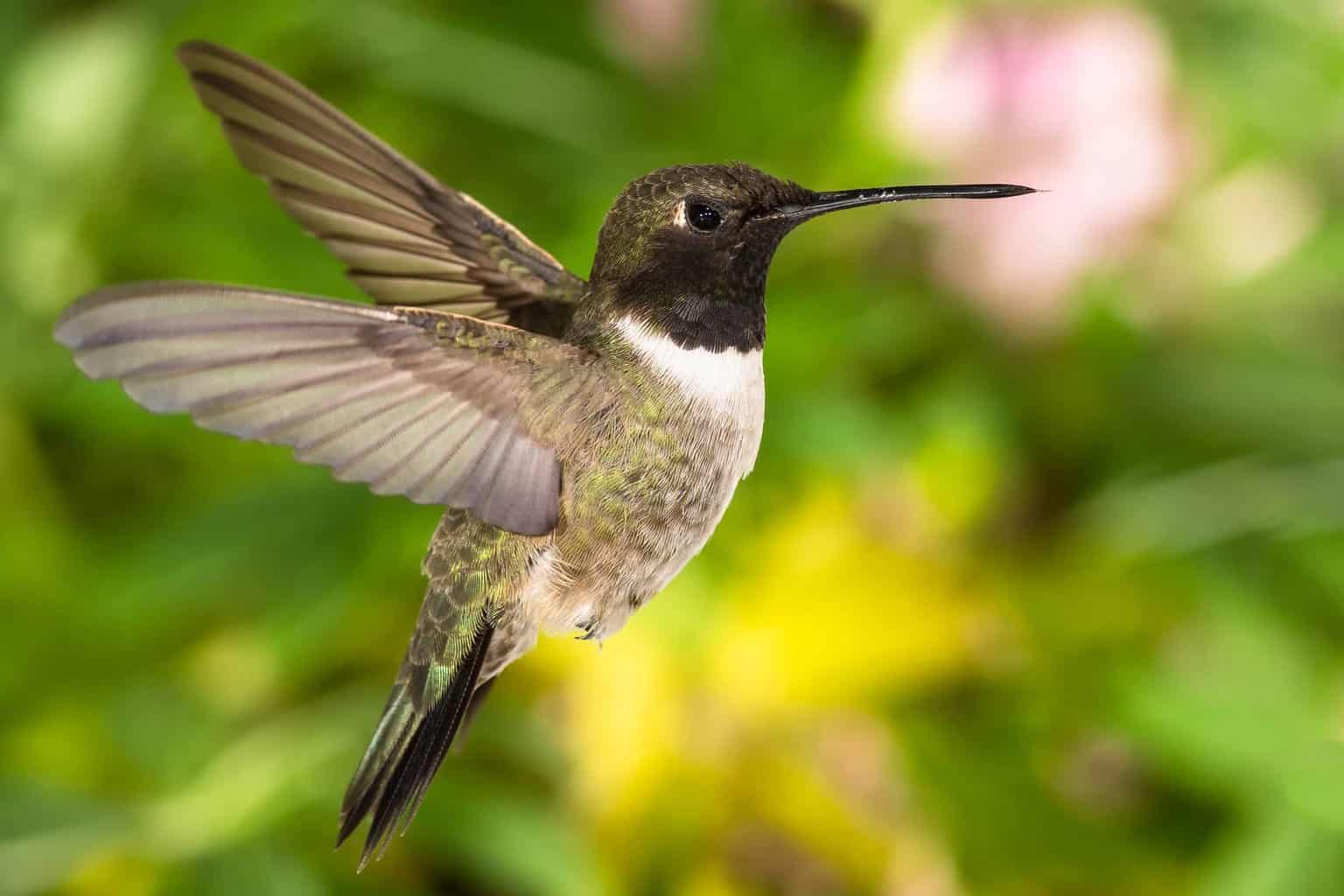
The smallest birds on the planet, hummingbirds measure just inches and weigh mere grams.
The black-chinned hummingbird, in particular, is one of the West’s most common hummingbirds, with a range of southern British Columbia down through much of Texas and the rest of the American Southwest.
The broad-tailed hummingbird has a spotty breeding range around the west, where they stick to meadows and other areas with ample food for their short yearly visits to the United States before heading southbound.
Other hummingbirds that breed in the Pacific Northwest – including the calliope hummingbird and rufous hummingbird – may also pass through Colorado twice a year on their migration path, although they won’t stay long.
Swifts

The black Swift, chimney swift, and white-throated swift are all members of this group that are found in Colorado.
Swifts belong to the same order, Apodiformes, as hummingbirds. Swifts comprise the Apodidae family and are fast-flying birds that don’t sit still for very long.
White-throated swifts have the widest range in Colorado, with the chimney swift restricted to eastern Colorado as the westernmost expansion of its range and the black swift sporadically spread across the state.
The black swift has a sad tale of decline to tell, having lost 94 percent of its population between 1970 and 2014, according to Partners in Flight (via All About Birds), with an estimate that at their current rate of decline, they’ll lose half of their population of 210,000 by 2023.
One problem with studying black swifts and attempting to save them is that scientists don’t know much about them, including where they spend the winter. It’s believed to be somewhere in South America, but there are more questions about black swifts and their decline than there are answers.
Swallows

The tree swallow, northern rough-winged swallow, bank swallow, barn swallow, and cliff swallow are all among the small birds that can be spotted in Colorado.
Swallows are similar to swifts in that they’re fast-moving birds that seem to be changing direction constantly. The average person is likely more familiar with swallows given their wide range and how accustomed they are to people and human-made structures.
A walk through an open field or prairie has likely yielded many a swallow for the typical birdwatcher, while barn swallows are common nesters on the sides of buildings.
Cliff swallows are also relatively common birds in Colorado, with their nests made of mud stuck to the sides of vertical rock faces and buildings.
Northern rough-winged swallows have a breeding range that reaches from American coast to coast, but they can be an under-the-radar species given their lack of bright colors like other swallow species.
A dull brown bird moving too quickly to get a good ID can often get ignored, but you can tell them from other swallows by this coloration and the fact that they fly with a little bit slower flaps of their wings and may skate over the water’s surface a little lower than other swallows.
Flycatchers

Flycatchers are interesting birds, starting with their taxonomy. Tyrant flycatchers make up the largest family – Tyrannidae – of birds in the world, numbering nearly 450 species across more than 100 genera.
They’re often quite small and dull in color, with hues ranging from olive green and yellow to gray and brown. They can often be difficult to tell apart.
While we’re on the topic of flycatchers, it’s worth giving a mention to the Southwest Willow Flycatcher Initiative, which includes work in Colorado.
Although willow flycatchers aren’t generally rare across their fairly wide range, southwestern willow flycatchers are an endangered bird that the Natural Resources Conservation Service is working to save.
Brown-headed cowbird parasitism, habitat loss and destruction, and overgrazing are among the problems plaguing this bird, All About Birds states.
Types of flycatchers that can be found in Colorado include the olive-sided flycatcher, western wood-pewee, willow flycatcher, Hammond’s flycatcher, gray flycatcher, least flycatcher, dusky flycatcher, Cordilleran flycatcher, Eastern phoebe, Say’s phoebe, ash-throated flycatcher, and great crested flycatcher.
Bluebirds

Next, we turn our attention from the dull flycatchers to the dazzling blues of America’s bluebirds, though we appreciate both types of birds the same.
Bluebirds are often among birders’ favorites, with three species in North America: the eastern bluebird, the western bluebird, and the mountain bluebird. The latter two are quite common in parts of the American West, including Colorado. Although we think of Colorado as one of the quintessential western states, the eastern side of the state could be home to eastern bluebirds as well.
You can tell an eastern bluebird male from a male western bluebird by the eastern variety’s orange throat compared to the western bluebird’s blue throat. Eastern bluebirds often have a lighter, less rusty brownish belly.
Females are quite similar to one another, with an eastern bluebird told apart by a little bit more of an orange-ish tint along the side of the neck.
Male mountain bluebirds may be the most spectacular of the three species. They don’t have any of the orange rustiness found on the other two, and their blue is a lighter, sky-blue hue than the royal blue of the others.
Bushtit

The American bushtit, most commonly referred to without its geographical identifier, is the only member of its genus, Psaltriparus, and the only American member of the Aegithalidae family.
They measure just about three inches and weigh in at between a tenth and a fifth of an ounce, according to All About Birds.
They’re shaped like a round little chickadee or kinglet with wide bellies, long tails, and tiny bills, but they lack clear identifying markings with light cream-colored bellies and pale gray backs and heads.
Chickadees

Speaking of chickadees, we move on to the Centennial State’s two resident chickadees, the black-capped and mountain chickadees. The former is one of the most common birds across much of the heart of North America.
Since you’re likely familiar with that species, let’s focus on the less common mountain chickadee, which has a similarly unstreaked underside and black and white head and face, with an additional white stripe running over each eye.
Their range is mostly on the western edge of the state, where they occupy mountain forests. They can thrive in dry areas throughout desert states like Nevada and Utah.
Juniper Titmouse

As All About Birds points out, the juniper titmouse is a habitat specialist of the pinyon-juniper woodlands mostly of the extended Four Corners region of the United States, with some expansion to Nevada, southern Idaho, and further reaches of the Four Corners states.
The juniper titmouse isn’t the smallest bird on this list by any stretch. It has similar colors as the bushtit, for example, but weighs as much as eight times more (though still less than an ounce, we might add).
The juniper titmouse’s uninspiring color patterns can be confirmed by the fact that it used to be a member of a species called the “plain chickadee,” which included this species and the oak titmouse, a resident of the Sierras.
Nuthatches
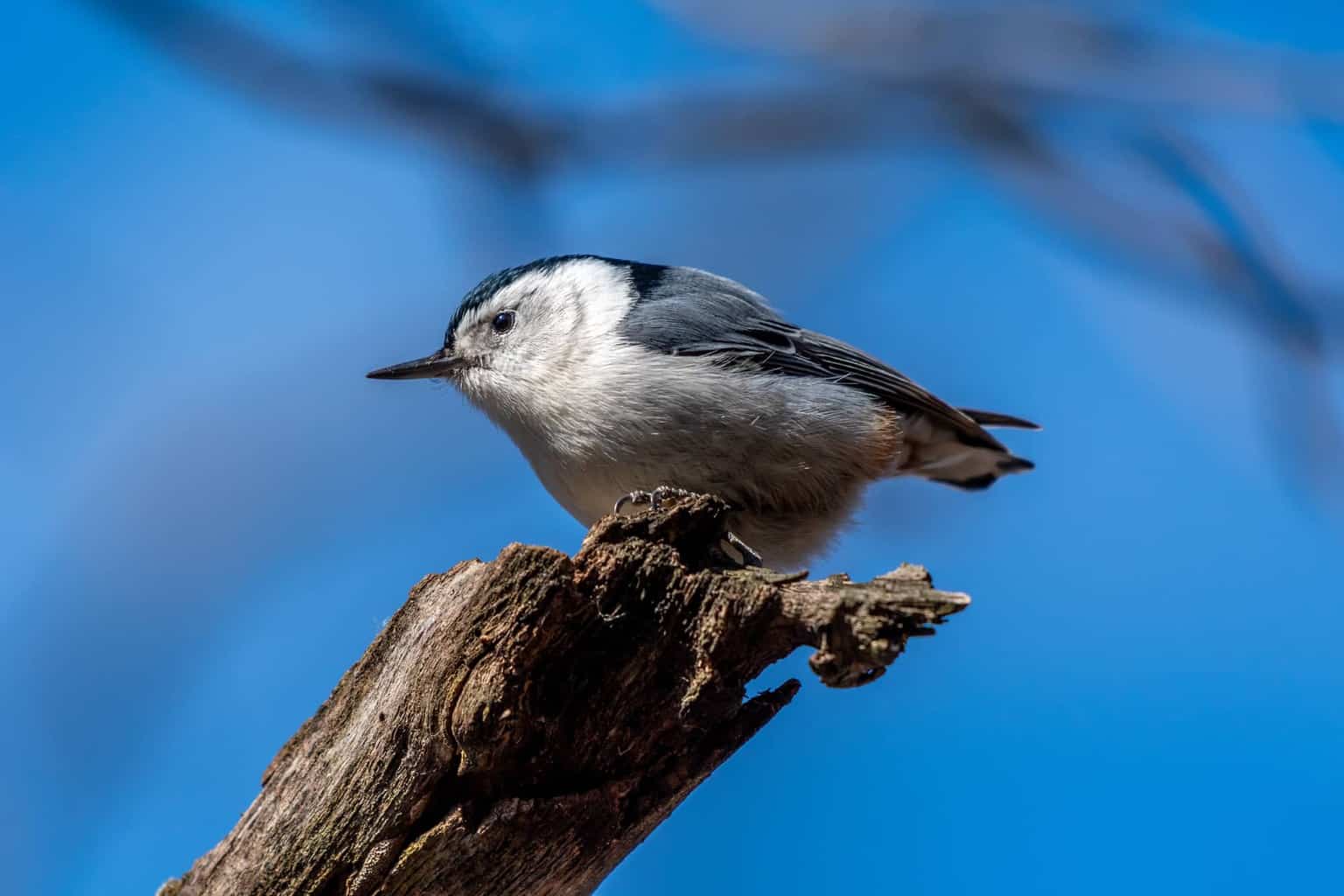
The state of Colorado is home to three of North America’s four nuthatches: the red-breasted nuthatch, white-breasted nuthatch, and the pygmy nuthatch. The southeast’s brown-headed nuthatch is the only exclusion.
Red-breasted and white-breasted nuthatches are common birds familiar to most birders, but that may not be the case for the pygmy nuthatch.
Measuring in at just 0.3 to 0.4 ounces and 3.5 to 4.3 inches, according to All About Birds, the pygmy nuthatch is a tiny bird befitting of its name. For reference, the more common white-breasted nuthatch measures more like 5 inches and between 0.6 and 1.1 ounces.
Pygmy nuthatches have tan and white undersides and gray/brown topsides with little tails.
Look for them in pine forests across the west, where they can be seen in typical nuthatch form: hanging downward with their stubby necks poking a head out from the tree trunk, like this white-breasted nuthatch:

Brown Creeper

If you’ve never seen a brown creeper, you’re not alone. Despite their common status, they have excellent camouflage that can make them almost impossible to find on sight alone as they blend into their surroundings.
Their inconspicuous appearance conceals their location, but they may sometimes give it away through their calls and songs:
Wrens
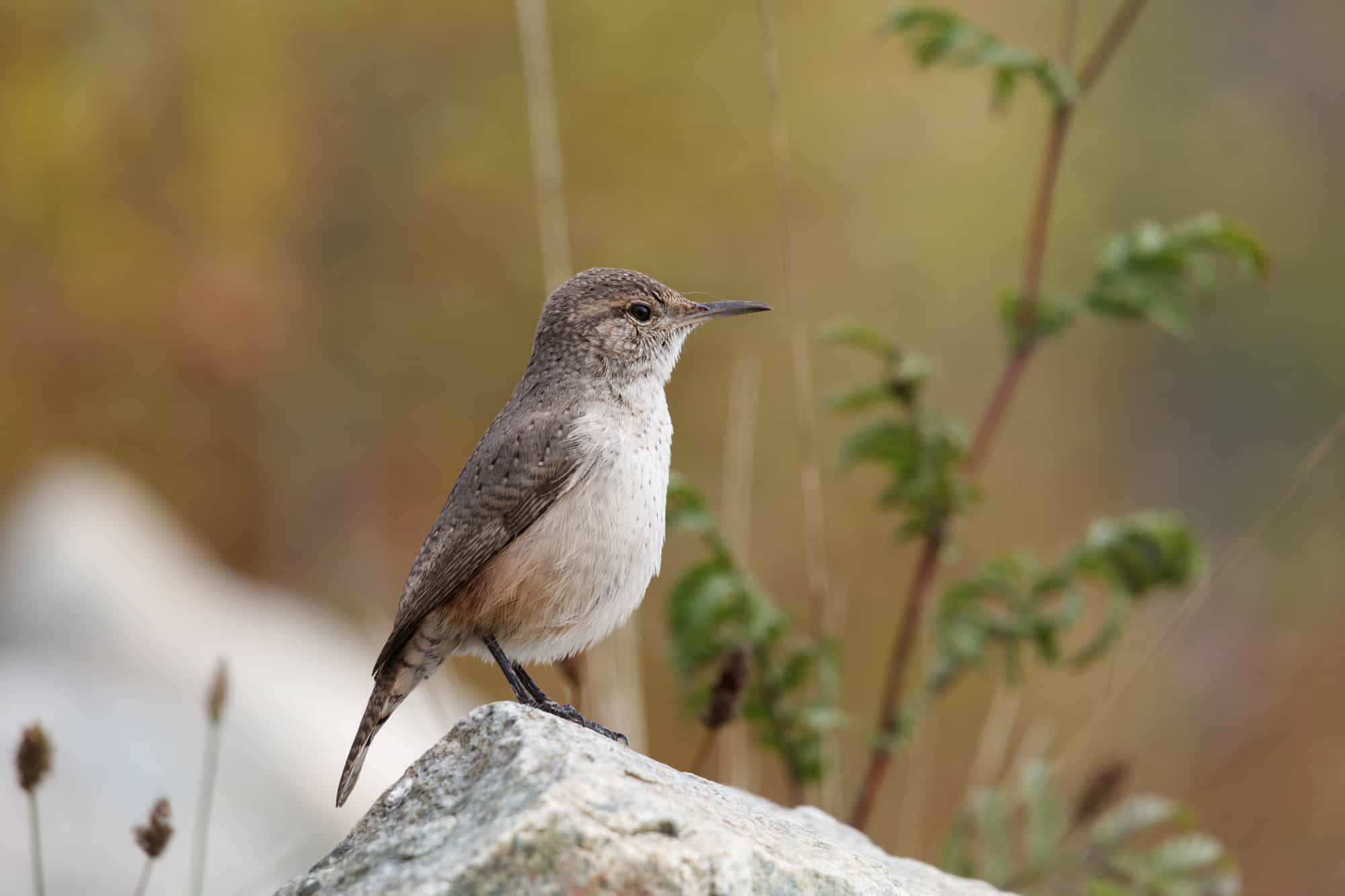
Wrens are new-world birds in the family Troglodytidae. Just one member of the family is native outside of the Americas, the Eurasian wren, or just “wren.”
Wrens vary in size, but we’re comfortable considering them small enough to make this list, as they typically weigh in at less than an ounce and measure just a few inches long.
House wrens are common breeding wrens across much of the United States and year-round in nearly the entirety of South America, while canyon wrens, rock wrens, and Bewick’s wrens are common western American wrens. Marsh wrens don’t breed as commonly in America as house wrens, but they can be seen in most parts of the U.S.A. for at least some part of the year.
For more on the wrens of Colorado, including a few more rare species, click here.
Blue-Gray Gnatcatcher

A personal favorite, the blue-gray gnatcatcher is a little bird with a slate blue head and back and pale underside.
It’s the only gnatcatcher native to Colorado, though it’s more common in the eastern United States and further south to the Gulf and southern Atlantic states as well as Mexico.
If habitat and population trends continue, the blue-gray gnatcatcher’s range may contain more of Colorado in the future. According to All About Birds, the species’ range has been expanding northward since the early 1900s as temperatures rise.
For now, however, look and listen for them in open areas of western Colorado.
Kinglets
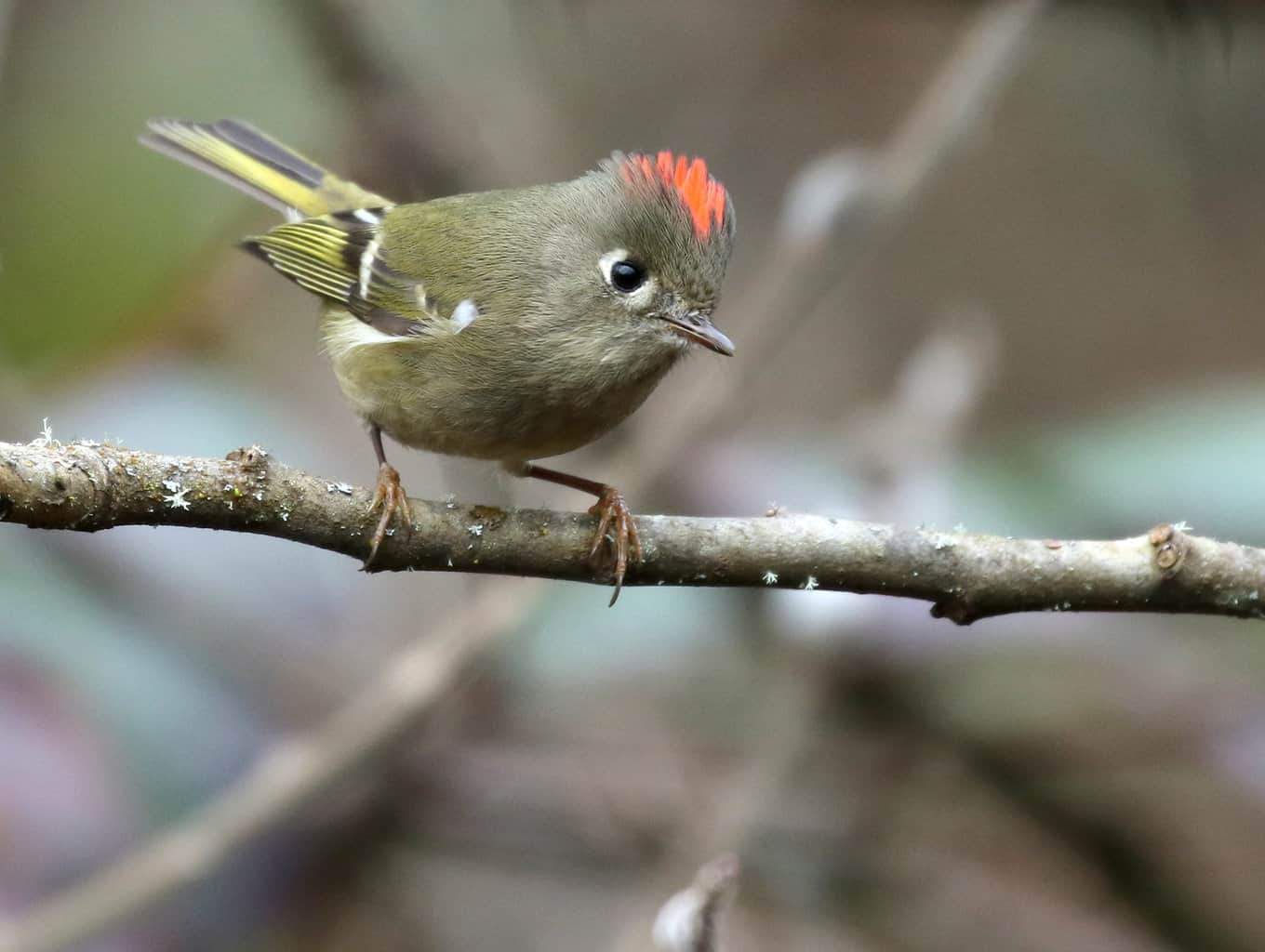
Colorado is home to two kinglet species, the ruby-crowned kinglet and the golden-crowned kinglet. The more spectacular of these might be considered the ruby-crowned kinglet when its ruby-red patch is visible.
When hidden from sight, the kinglet male is an olive green bird without a signature mark that looks just like the female.
While red stands out more in the birding world, let’s not forget about the golden-crowned kinglet, however. Both males and females are pretty birds with pretty yellow caps, but the male has the potential to open up a flashy orange mohawk from its yellow crown in certain situations.
These are two of only six kinglet species in the Regulidae family across the globe.
Vireos

Vireos are not super well-known birds for some, and they can be misidentified as warblers, finches, or flycatchers.
Vireos vary in size. The gray vireo, for example, may approach six inches in length compared to the Bell’s vireo which may be an inch to an inch and a half smaller.
The warbling vireo is widespread, with a range that stretches from northwestern Canada down to Louisiana and up to Maine.
As its name tells you, it has a sweet, warbling song that rings out from forests and other areas of dense vegetation.
Bell’s vireo is a mostly Great Plains and Midwestern bird, but its range may just peek into the flatter parts of Colorado along the eastern edge.
On the contrary, gray vireos are most common on the west edge of the state. Plumbeous vireos have a wider range across most of the western half of the state.
The Warblers

Among the small birds that can sometimes be spotted in Colorado are the Northern waterthrush, orange-crowned warbler, Lucy’s warbler, Virginia’s warbler, MacGillivray’s warbler, common yellowthroat, American redstart, yellow warbler, yellow-rumped warbler, Grace’s warbler, black-throated gray warbler, ovenbird, and Wilson’s warbler.
Despite common yellow coloring across many species, warblers are often secretive little birds that move so quickly that it can feel impossible to get a good look at (or photo of) them.
Some warblers only pass through Colorado on their way between southern wintering grounds and northern breeding grounds. The state’s breeding warblers include the orange-crowned warbler, Virginia’s warbler, MacGillivray’s warbler, common yellowthroat, American redstart, yellow warbler, yellow-rumped warbler, Grace’s warbler, black-throated gray warbler, and Wilson’s warbler.
The New World warblers belong to the Parulidae family, with most spending their time in trees as they search for insects to feed on.
On the topic of smallest birds, Lucy’s warbler is considered the smallest of the state’s warblers, weighing between 0.2 and 0.3 ounces and measuring as little as 3.5 inches, according to All About Birds.
The ovenbird, which is a rare Colorado breeder, is one of the largest in the category, at 0.6 to 1.0 ounces and 4.3 to 5.5 inches in length, via All About Birds.
The Sparrows

There are just way too many sparrows to touch on all of them, but if you want to learn all about Colorado’s sparrows in more detail, we’ve got a list for you here.
The house sparrow is one of the most common birds across the world, including in major cities, but it’s not a native species and it’s not super closely related to the rest of the birds on this list.
While this sparrow is likely familiar, even if you’re not a big birder, other sparrow species might be less recognizable. They’re streaky, typically brown, and the markings that separate them are often small.
Other sparrows that don’t fit that mold include the state’s three towhees and the dark-eyed junco, which are part of the New World sparrow family but sport different names.
And, of course, not all sparrows on the list will be year-round residents of Colorado. Some will only use the state as a migration stopping point, while others will spend the entire winter before moving on.
Some (but not all) of Colorado’s breeding residents include the vesper sparrow, lark sparrow, lark bunting, dark-eyed junco, chipping sparrow, Cassin’s sparrow, and grasshopper sparrow on the east side of the state, and Brewer’s sparrow, Lincoln’s sparrow, song sparrow, and white-crowned sparrow in the western half.
Finches
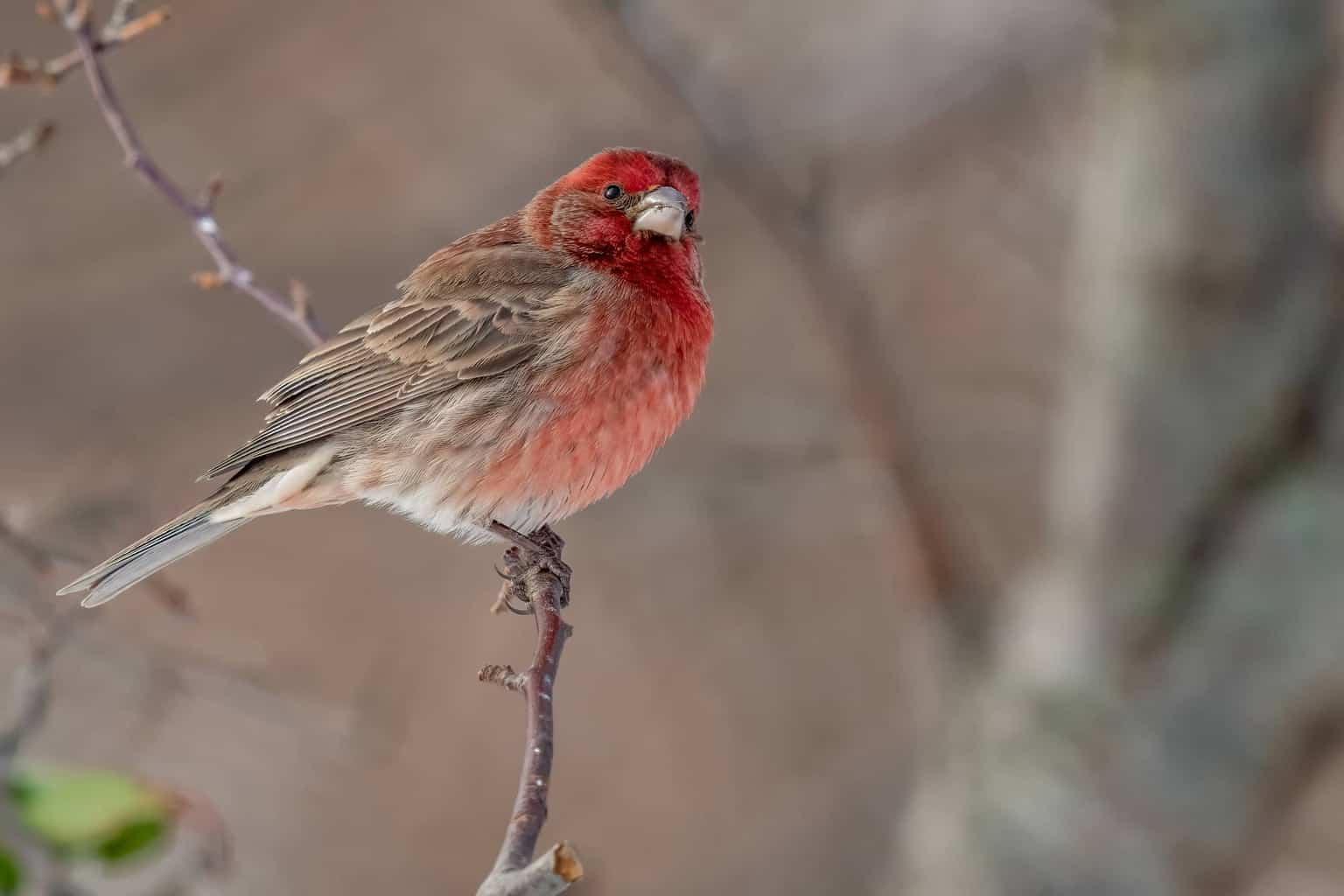
Colorado is home to several finches, including several rosy-finch species. These birds are right at home in Colorado, as they’re part of a genus, Leucosticte, called the mountain finches.
The brown-capped rosy-finch, in particular, is notable for Colorado. Its range is almost exclusively in the state, except for a couple of small areas in northern New Mexico.
They spend their summers at very high elevations before moving down into lower spots throughout west-central Colorado when colder temperatures arrive.
The finch family also includes other common birds like various goldfinches and the two unique crossbills.
Feeding goldfinches is a fun pastime, as they are common backyard birds known to gather at feeders in large numbers, especially when offered thistle (also called Nyjer) seed.
To learn more about feeding finches, click here.
Frequently Asked Questions
What Is Colorado’s Smallest Breeding Bird?
Hummingbirds are the smallest birds in Colorado, though it’s tough to give the crown to either of the state’s breeding residents, the black-chinned hummingbird or broad-tailed hummingbird.
The former measures about 3.5 inches and 0.1 to 0.2 ounces, according to All About Birds, while the latter is between 3.1 and 3.5 inches with the same weight range.
What Is Colorado’s Biggest Bird?
Biggest can refer to both length, wingspan, and weight. The American white pelican has to be in the conversation, measuring four to five and a half feet long, weighing up to 20 pounds, and featuring a wingspan of eight feet or more, according to All About Birds.
When considering weight, the trumpeter swan is also up there, with the species weighing as much as 28 pounds, via All About Birds.
In Conclusion
What you consider “small” may not be what we consider small or what another person considers small. Most birds are small to the average person, after all.
Whether you were just curious about small birds or you were hoping to identify a small bird you saw in the field, hopefully, you accomplished that here. Regardless, there is plenty more to explore in the world of Colorado’s birds.
Wild Bird Scoop has lists of many different bird groups in the state, including falcons, finches, wrens, sparrows, ducks, blackbirds, hummingbirds, owls, hawks, and woodpeckers.

